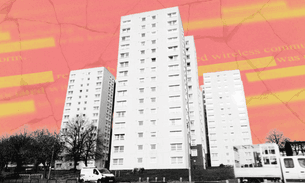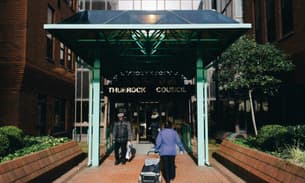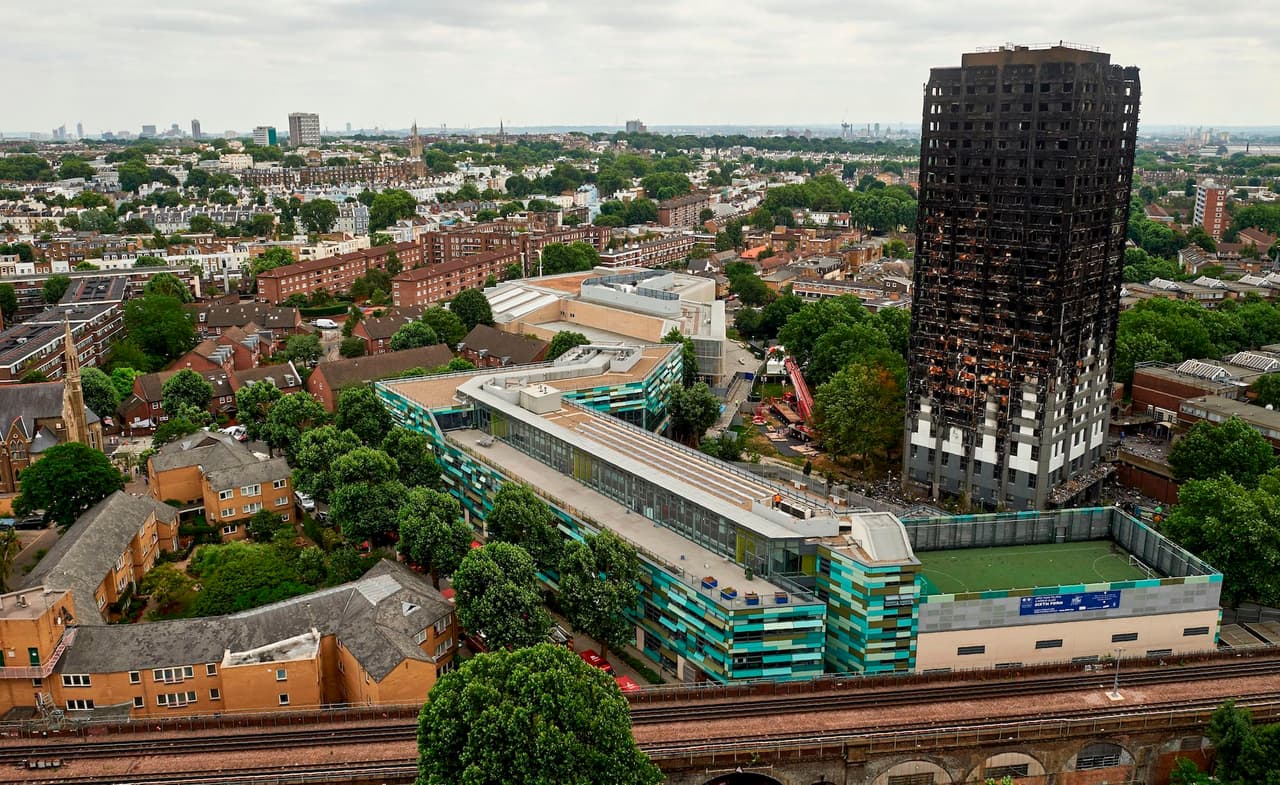
Exclusive: Grenfell council had £129M it could have spent on tower renovation
Kensington and Chelsea council made £129 million from selling property in the years leading to the Grenfell fire tragedy - money that could have been spent on the tower’s renovation works which may have been fatally compromised by cost-cutting.
At the same time cuts were being made to the budget for refurbishing Grenfell tower - including saving £300,000 by using cheaper, more combustible cladding - the council had tens of millions of pounds in the bank which it could have spent, an investigation has revealed. The cladding was a key contributor to the speed with which the fire tore through the building on June 14, 2017, killing 72 people and leaving hundreds of families homeless.
The council has previously said legal restrictions meant it could only use rental income from local authority housing to pay for the renovation works. However the council’s own documents show a large part of the work was actually paid for with the proceeds from the sale of council property - basement flats in Elm Park Gardens, Chelsea.
A collaborative investigation by the Bureau, HuffPost UK and the BBC Local Democracy Reporting Service has revealed for the first time that the council had far more proceeds from property sales available. When presented with our findings that it could have used this money to increase the Grenfell Tower budget, the council did not contest this.
We made the discovery as part of a wider Bureau investigation which revealed how councils are turning to the property market to replace funding lost through government cuts. More than 12,000 public spaces have been sold by councils in England since 2014/15, generating £9 billion in revenue, we reported in March.
Not only was Kensington and Chelsea council selling property worth millions of pounds, it was also spending millions buying more, our latest investigation found. In the year leading up to the Grenfell fire, it spent more than £60 million investing in new buildings.
Survivors of the inferno have accused Kensington and Chelsea of “acting more like a property developer than a council” when it should have been focused on fire safety at Grenfell.
The revelations have prompted fury over why spending on the Grenfell works was so tight, when the council had a significant income stream that could have upped the budget, and when it went on to spend millions buying new property.
Survivor Edward Daffarn, who was among the campaigners fighting for the council to act on repeated safety warnings prior to the fire, said: “The question is obviously why weren’t they using this other money to do that? If they could use the money from the sale of the Elm Park Gardens basements at Grenfell, why couldn’t they use money from the other property sales?
“That’s a question that I would like to know the answer to. I can tell you what I think but it’s Kensington and Chelsea Tenant Management Organisation, councillors and council officers that need to answer.”
David Lammy MP, whose friend died in the fire, said: “These revelations show how Kensington and Chelsea council treated those living in Grenfell Tower with a combination of disdain and indifference in the years running up to the fire, despite repeated safety warnings and complaints from residents.
“If the council had used its £129m in property sales to renovate Grenfell Tower, rather than buying up other properties, 72 lives could have been saved. This forms part of a picture of gross negligence. Those responsible must be held to account.”
The circumstances leading to the catastrophic fire are now the subject of a major public inquiry. The inquiry’s remit includes looking at how the renovation works may have affected the safety of the building.
But the extent of the council’s property sales and investments, during a period when it said it had limited money to pay for council estate repairs, is revealed for the first time today.
Keeping the costs down
The budget for the renovation of Grenfell was under pressure from an early stage. Our investigation raises fresh questions as to why.
Documents from the time show the project was originally intended to be funded entirely through £6 million raised from the sale of a series of basement units in Elm Park Gardens, Chelsea, with the council seeking to ensure “value for money” as early as July 2013.
Kensington and Chelsea Tenant Management Organisation (TMO), which managed the borough’s 6,900 council homes, subsequently asked for the budget to be increased to £9.7 million in order to include additional improvements such as a new heating system for the building. The increase was to be paid for using rental income from council housing.
Leadbitter, the proposed contractor at the time, estimated the work would cost £11.3 million, some £1.6 million over the TMO’s revised estimate. The council worked with the company in an attempt to “bring the scheme within budget” but described progress as “slow.” As a result, the contract was put out to the market. In March 2014 the construction firm Rydon was appointed to do the work after it submitted “the most economically advantageous tender.”
Despite Rydon’s successful bid, uncertainty about the overall budget for the scheme remained. A council report on July 10 2014, little more than three months after the company’s appointment, listed a number of issues that needed to be resolved before the total sum could be determined. They included “the cladding material and fixing method,” details which could “result in increased cost.”
“We would therefore like to be prudent and plan for this possibility,” the report said. Councillors were also asked to add a 6% contingency fund to the budget, bringing it to £10.3 million. The increase could be paid for using funds from rental income, the report said.
However days later, on July 16, the TMO is reported to have sent an email about cladding prices to consultants managing the project which said: “We need good costs for Cllr Feilding-Mellen [the council’s deputy leader in charge of housing].” Another few days later, the TMO sent Rydon a list of requested savings adding up to nearly £700,000.
The list, obtained by the BBC, shows the budget by then stood at £9.2 million and Rydon was asked to bring it down to £8.5 million. The requested savings included £293,368 which could be clawed back by using a different type material for the cladding. It was around this point the cheaper panels were adopted. Rydon declined to comment when contacted during this investigation.
At the time of these changes Kensington and Chelsea was in “robust” financial health, according to its accounts. By the end of 2013-14 the council had underspent on its annual budget by £31 million and had £267 million in reserves that were not already ringfenced for other use. These reserves included nearly £37 million in a pot of money raised specifically from the sale of land and buildings, such as the units at Elm Park Gardens.
During and after the renovation work this pot of money continued to grow. As well as the Elm Park Gardens basements - the sale of which ultimately raised £7 million, our FOI shows - our research found the council raised substantial sums through the disposal of the former Thamesbrook residential care home in Dovehouse Street, a recycling depot in Denyer Street and a former children’s home in Bassett Road. By the end of 2017-18, the reserve where the council keeps the proceeds of asset sales had swelled to nearly £130 million.
Council reports from the time show it was planning the sales listed above before the refurbishment began. Despite this, it only allocated £6 million of the money from asset sales to the tower improvements.
Responding to our findings, a council spokesperson said: “The lead members increased the budget for the Grenfell refurbishment when we were asked to do so from £6m to £9.7m, and then again to £10.3m.” They said council officers had “worked to their understanding” of the rules and regulations relating to how income from the rent of council properties and sale of council assets could be used. (The government confirmed to us that councils are free to use money from the sale of property to fund improvements to council estates)
On the council’s property deals, the spokesperson said: “We have already openly acknowledged that the property agenda was too focused on commercial matters when there should also have been more attention to other objectives, particularly affordable homes and social value.”
When asked to comment on the specifics of how the tower refurbishment was funded, and that the council had the option of spending more, the spokesperson said that would almost certainly be an issue for phase two of the inquiry and it could not comment further.
Buying as well as selling
Kensington and Chelsea were not just selling property during the run-up to the Grenfell tragedy, they were buying it too, spending tens of millions of pounds while doing so.
Little more than three months before the fire, the council spent £8.5 million on a dilapidated former undertaker’s site in Hewer Street. The rundown buildings, with several boarded up windows, are currently occupied by property guardians.
“I think it’s dreadful, absolutely dreadful, that they’ve bought this building but to do what with it?” asked Michael Singh, 60, who lives on Hewer Street.
Fellow Hewer Street resident Kelly Gitsham, 40, who owns and runs a design agency, said: “Why the council have bought it I don’t know, it must just be for land value, because you can see the walls are falling apart already. It’s a weird building to become involved with.”
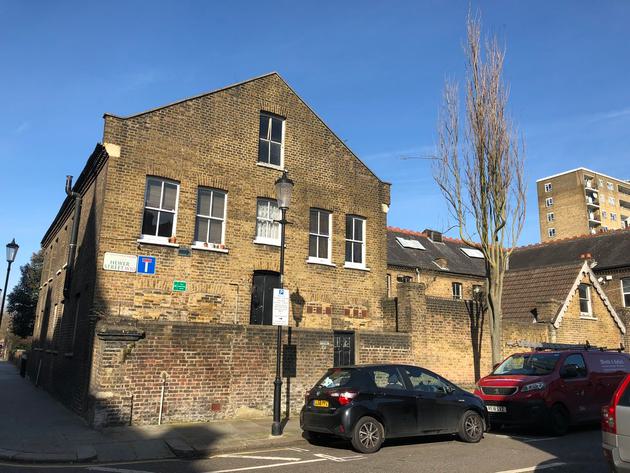 The council spent £8.5 million on rundown buildings in Hewer St
Photo by Emma Youle for HuffPost UK
The council spent £8.5 million on rundown buildings in Hewer St
Photo by Emma Youle for HuffPost UK
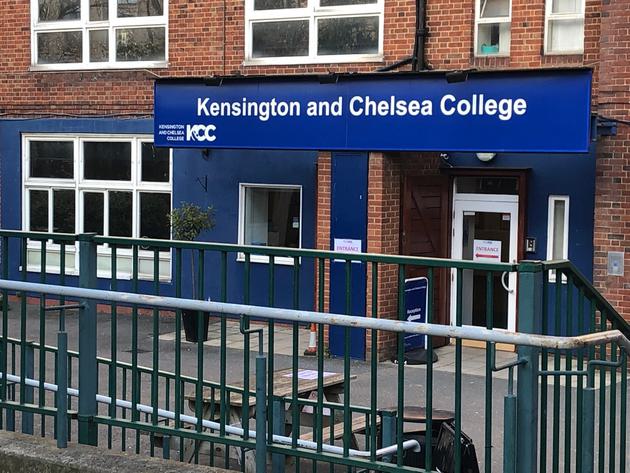 A college campus site was also bought for £28.2 million
Photo by Emma Youle for HuffPost UK
A college campus site was also bought for £28.2 million
Photo by Emma Youle for HuffPost UK
For decades the property was owned by John Nodes undertakers and was used as storage space for coffins and to dress bodies. In 2016 the new owners applied to develop the site into 16 flats, with permission granted by Kensington and Chelsea as the planning authority. Little more than a year later, the council bought the site for a sum close to the entire budget for the Grenfell works.
In answer to a Freedom of Information request the council said the Hewer Street site had been classified as an “investment property” - meaning its sole purpose was to generate money for the council, either through rental income or by increasing in value. Our investigation found the council spent more than £60 million on five such properties, including Hewer Street, in the year leading up to the Grenfell disaster.
When the budget for the Grenfell refurbishment was being set, Kensington and Chelsea owned investment properties with an estimated total value of £159 million. By the end of March 2018 the value of its portfolio had nearly trebled to £393 million, due in part to new acquisitions and the increase in value of its existing assets.
Kensington and Chelsea say the acquired land and buildings were earmarked as potential sites for new housing. During the Grenfell refurbishment, the council set up a company, Kensington and Chelsea Estates Ltd, which it said would help deliver new housing. Two months before the Grenfell fire cabinet members approved a £250,000 loan to cover the company’s start-up costs in relation to a proposal which would have seen the company purchase, own and manage 32 properties - all financed through further borrowing from the council. This model, known as a “development vehicle,” has since been dropped, the council said.
Its investment activities fitted in with a wider trend uncovered by a Bureau investigation published last December which found councils across England are speculating on the property market in an attempt to make money after losing funding from central government. The number of councils investing in property had doubled in two years, we found.
Ed Daffarn and his colleague Francis O’Connor were both closely scrutinising council activity in the years leading up to the Grenfell tragedy, through their work on the Grenfell Action Group blog, which they jointly published.
Daffarn believes some of the deals, particularly the purchase of Kensington and Chelsea College’s prime campus site in Wornington Road for £28.2m – bought when the college was in financial difficulty – were not in the public interest.
The college’s leadership later admitted, following an independent review of the college campus sale, that it was “plainly wrong” and not in the interests of the local community. Another report by the Further Education Commissioner said the sale process was “insufficiently transparent.”
The council has dropped plans to develop the college site into housing but says it is pursuing the idea at the other four investment purchases revealed by our FOI. It recently opened a public consultation about the plans to build new 600 new homes, including a minimum of 300 for rent to council tenants, on sites which include the Hewer Street property.
Acting “like a property developer”
Daffarn, who escaped from the 16th floor of Grenfell tower as it was engulfed in flames, thinks the council’s property portfolio activities may have contributed to the tragedy.
“The first job of local government is to keep the people safe, but [...] the Royal Borough of Kensington and Chelsea acted more like a property developer than a local council,” said Daffarn, who now works closely with Grenfell United, the official organisation for survivors and the bereaved.
 Survivor Ed Daffarn wants to know why more money wasn't spent on the tower renovation
Photo by Emma Youle for HuffPost UK
Survivor Ed Daffarn wants to know why more money wasn't spent on the tower renovation
Photo by Emma Youle for HuffPost UK
“If they’d been properly focussing on fire safety, rather than focusing on this, then Grenfell wouldn’t have happened. But it feels like they weren’t interested in keeping us safe, they weren’t interested in us. They were interested in property development and in getting their hands on the land.”
Responding to the account of property sales and investments in the run-up to Grenfell, a council spokesperson said officers had “worked to increase the amount of housing in the borough,” and to improve its quality. “Whilst we must let the public inquiry and police investigations determine what went wrong, we can say that no one at [the council] would have intentionally put lives at risk and no one at the council foresaw the tragedy that would unfold,” they said.
In response to our findings, Grenfell United said the investigation raised what would be one of the most important questions for the Grenfell inquiry: “Why did the Royal Borough of Kensington and Chelsea cut costs on essential safety features for Grenfell Tower, whilst playing monopoly and filing its bank account with profits from selling off our community assets?
“We truly believe 72 people would be alive today if the Royal Borough of Kensington and Chelsea had prioritised their duty to keep people safe in their homes, instead it seems they cared more about turning a profit than caring for our community.”
Header image of the Grenfell tower wreckage and the surrounding area by Niklas Halle'n/AFP/Getty Images
Our reporting on local power is part of our Bureau Local project, which has many funders. None of our funders have any influence over the Bureau’s editorial decisions or output.





